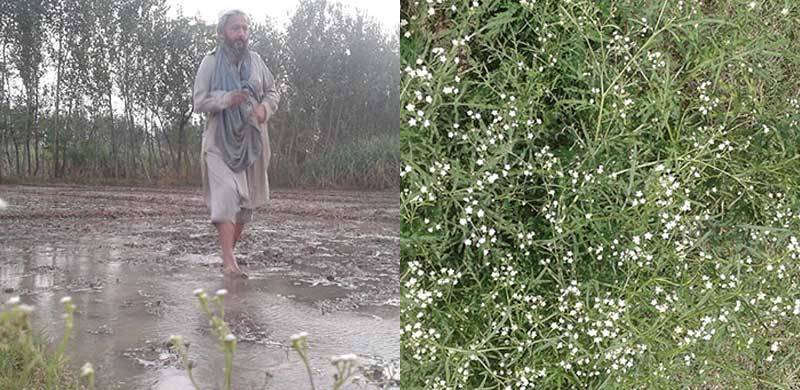
Parthenium Hysterophorus (Pashto: Bang Booty/Ganda Booty; Urdu: Gaajar Booti), an aggressively colonizing weed has been invading the Districts of Mardan, Swat, Buner, and Upper Dir, to name a few, in the Khyber-Pakhtunkhwa province of Pakistan. In order to know more about the flowering weed and its impact in these regions, Asif Mohmand explores the hazards of widely spread Parthenium weed and its impact on agriculture and skin allergy products as a newly established industry in the region.
Sustainable Development Goal (SDG) 3 calls for ensuring healthy lives and promotion of well-being for all at all ages. The related targets, particularly 3.3, 3.9 and 3.d, specifically identify an end to neglected tropical diseases, substantial reduction of illness from soil contamination, and strengthened capacity of especially developing countries for early warning, risk reduction and management of national and global health risks. The Khyber Pakhtunkhwa Climate Change Policy draft (finalised in June 2016) of the Environmental Protection Agency, Government of Khyber Pakhtunkhwa, recommends identification of vulnerable communities of the province and improving their access to and upgrading quality of health services along building their knowledge and capacities to reduce their health vulnerability to climate change.
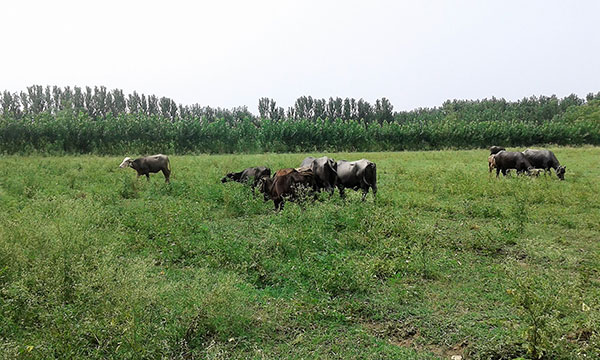
Ayaz khan, 33, a graduate of the University of Peshawar who later adopted farming as a profession like his ancestors in Mardan, while elaborating on the impact of Parthenium on his crops and farming practices, reveals: “The main issue that we face is that for the last couple of years, since this plant is around, the labourers do not agree to work in our fields, though at times we are willing to pay more wages comparatively. The labourers complain of itching/skin allergy, which was not the case some time ago.”
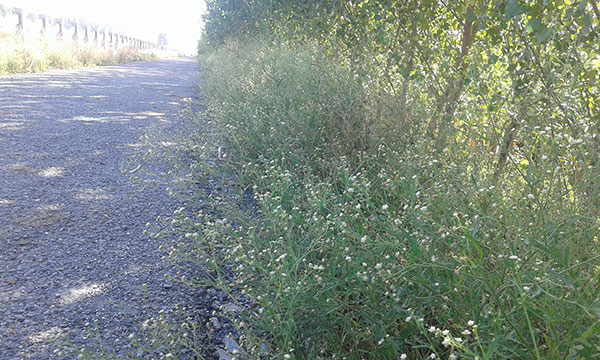
He shared that Parthenium is in all the fields around, in plains, in streets, on sideways, in the drains, literally everywhere. He added that in the last three to four years, Parthenium has spread rapidly in the village council Charbanda and surrounding areas and has affected the farmers. Ayaz Khan further added that he has experimented with different kinds of sprays to uproot Parthenium but has not been successful. “One aspect is that its timings are not known, it stays green twenty four hours, it comes from nowhere, matures in a month or so and then starts spreading seeds without any intervals. If there is one plant in a field, in a month’s time there are more than two hundred plants.”
Parthenium is not only an issue for Ayaz Khan, rather it is spread in the agricultural land around the whole district, in drains, in streets, on field boundaries and around the Ring Road in Mardan.
Sher Afzal, 60, works in the field as a labourer, confirms the fact and observes: “Itching is a severe issue. Till now, we used to sleep in the same cloths that we laboured in and we would be fine. But now it is not the case. Itching has increased manifold in the crops.”
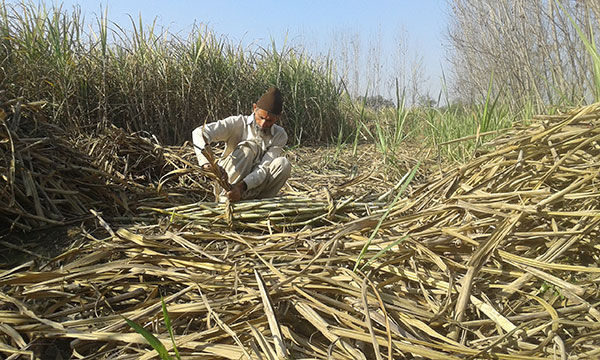
Faheem ud Din Kakakhel is owner of a skin allergy and other skin related medicine store at the busy Malakand Chowk in Mardan for the last thirty years. Kakakhel recalls that earlier people used to come for medicines regarding skin allergy, however, the number of people has increased over the time. He added that people from different districts travel to Mardan for health care services and a vast majority of them complain about skin related disease. “It’s itching and skin allergy, and it has been increasing with each passing day, it is not decreasing”, Kakakhel concludes.
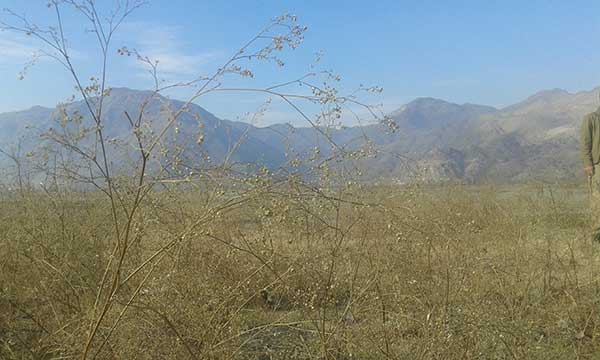
Population of the district Mardan is about two million and two hundred thousand and there are fifty Basic Health Units (BHUs), six Rural Health Centers (RHCs), five Type D Hospitals, one Tehsil Headquarter Hospital, and two other large hospitals in the district. Among all of these, only the Skin OPD record of the Mardan Medical Complex reveals that 200-250 patients, on average, visit the Skin OPD six days a week. According to the Skin OPD record of the Hospital, during January 2015 and September 2018, 145,600 patients have visited the OPD. Dr Lal Zada, a senior doctor in the Skin OPD, and Muhammad Iqbal, Seniour Skin Specialist, confirm that the number of skin allergy related patients has increased. They added that majority of the patients complain of itching and allergy.
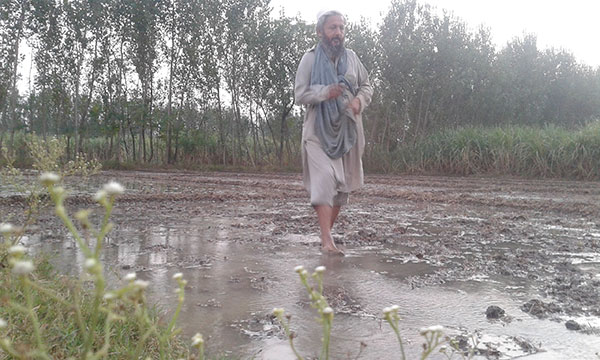
CAB International (CABI), an International not for profit organization, is working on Parthenium in Pakistan. According to the information shared by the organisation, Parthenium is categorised as a poisonous weed. According to the organisation, Parthenium is not only dangerous for crops, but also for animals and humans. CABI claims that Parthenium is spreading wildly around the provinces of Punjab and Khyber Pakhtunkhwa, and besides skin allergies, it is causing asthma, fever, cough and eyes related allergies.
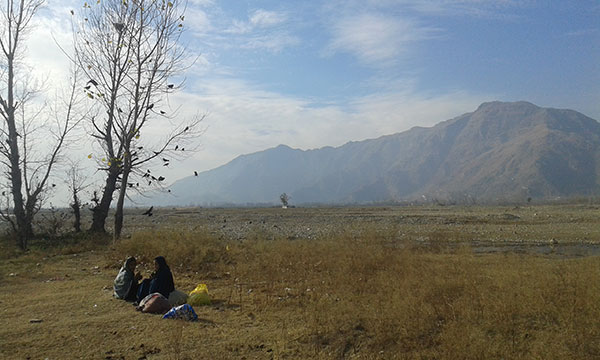
It is important to note that to date, there is no active program/project of the Khyber Pakhtunkhwa Government related to the wide spread of Parthenium and its impacts. According to the information obtained at the Environmental Protection Agency, the Agriculture Department has not yet shared any information with them related to the weed and its impacts, and the Agency itself has no any plan or program in this regard to run social awareness campaigns or help in reducing the spread of Parthenium.
In addition to the plain regions in the KP province, Parthenium is seen in the hilly areas of the province too. As per the discussions with people in this regard in the districts of Swat and Lower Dir, they are also clueless about the plant and that from where it has emerged and that why is it spreading that wildly. In the plains on the mountains, in pavements and on both sides of the Swat River, Parthenium is assertively colonising even today.
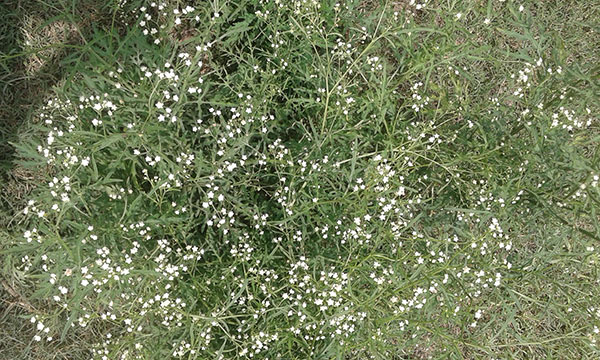
Dr Riaz Ahmad Afridi, a researcher on Parthenium at Khyber Pakhtunkhwa Agriculture Research Institute, Tarnab Farm, shared that the herb is called Parthenium Hysterophorus in Latin, however, due to its impact, it is known as a famine weed. He added that this weed was discovered in 18th century and had travelled in grains sent as aid from Africa to the Pune region in India. Gradually after, it has spread to the neighbouring border areas and Punjab in Pakistan. Dr Afridi elaborated that such herbs spread through humans, water, livestock, transport vehicles, various agriculture related and other machineries, natural disasters, and air. “If one seed of Parthenium germinates in a field, it produces 15,000-25,000 seeds at a time. As the herb matures, in four weeks it grows flowers, and then for eight months, it continuously grows flowers and seeds. And secondly, when a seed of Parthenium germinates in a field, it stays there for around seven years.” Dr Afridi, while responding to a question, shared that the effects of climate change has made the environment conducive for such herbs and weeds, and that herbs and weeds impact the environment in both positive and negative ways. However, he added, Parthenium has the characteristic that it gets familiar with the new environment quickly. He remarked, the climate in Khyber Pakhtunkhwa is favourable to the growth of such herbs and weeds. Dr Afridi confirms that in agricultural regions, such weeds have a bad impact of the agriculture economy. “The toxic and poisonous material that it contains is on such a peak that even if it touches normal bare skin, it results in itching and allergy. When livestock consume such herbs, it affects their stomach. It is also toxic for bees and flies as all of them do not have the capacity to absorb this material, and thus there pollination stops. This world is green because of pollination. In vegetables, it adversely affects aubergine, potatoes, tomatoes, cauliflower, and others. Basically it reduces the agriculture yield”, Dr Afridi concludes.
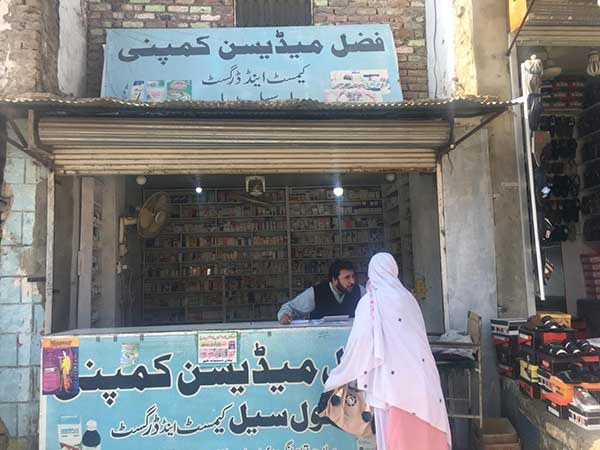
Neither Ayaz Khan nor the government of Khyber Pakhtunkhwa are aware of the spread of this poisonous weed in Mardan district and the increase in patients of allergy and other skin related diseases. On the other hand, hundreds of types of medicines related to allergy and skin related diseases are available in medical stores across the country. On the condition of anonymity, a sales representative of skin allergy medicines from Sialkot, associated with an international medicine company for the last twelve years, revealed that there has been an increase in skin allergy related products and that almost each international and local medicine company produce various products related to skin allergy and related diseases. The medical representative estimated that if a company produces eighty different products, thirty five of these would be related to allergies.

Gohar Ali, Doctor of Veterinary Medicines, observes that after antibiotics, it is the allergy medicine predominantly present in the market. “When we talk about allergy and medicine, the influx of various related products is in the market, especially in the last approximately ten years, some of these are registered, some are not, and among them are multinationals as producers; it has grown into a distinct and exclusive industry. The anti-allergy products, roughly, have a share of 30 to 35% in the market”, Gohar Ali opined.
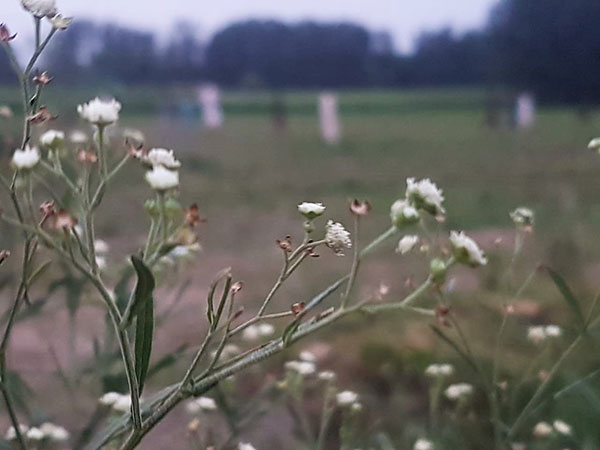
The medical store of Faheem ud Din Kakakhel at the famous Malakand Chowk also contains various such medicines, produced by both international and national companies. According to Kakakhel, with the increase in allergies and skin related diseases, the medicine companies producing such medicine have also mushroomed recently. “There are countless producers of skin allergy medicines and their sales representatives”, Kakakhel observed.
The article is based on the following video:
https://www.youtube.com/watch?v=HgiEJ8IkpKc
Asif Mohmand is freelance Journalist and Partner with Noor Ul Islam at ProgNat Development Initiative (PDI) Peshawar.
Sustainable Development Goal (SDG) 3 calls for ensuring healthy lives and promotion of well-being for all at all ages. The related targets, particularly 3.3, 3.9 and 3.d, specifically identify an end to neglected tropical diseases, substantial reduction of illness from soil contamination, and strengthened capacity of especially developing countries for early warning, risk reduction and management of national and global health risks. The Khyber Pakhtunkhwa Climate Change Policy draft (finalised in June 2016) of the Environmental Protection Agency, Government of Khyber Pakhtunkhwa, recommends identification of vulnerable communities of the province and improving their access to and upgrading quality of health services along building their knowledge and capacities to reduce their health vulnerability to climate change.

Ayaz khan, 33, a graduate of the University of Peshawar who later adopted farming as a profession like his ancestors in Mardan, while elaborating on the impact of Parthenium on his crops and farming practices, reveals: “The main issue that we face is that for the last couple of years, since this plant is around, the labourers do not agree to work in our fields, though at times we are willing to pay more wages comparatively. The labourers complain of itching/skin allergy, which was not the case some time ago.”

He shared that Parthenium is in all the fields around, in plains, in streets, on sideways, in the drains, literally everywhere. He added that in the last three to four years, Parthenium has spread rapidly in the village council Charbanda and surrounding areas and has affected the farmers. Ayaz Khan further added that he has experimented with different kinds of sprays to uproot Parthenium but has not been successful. “One aspect is that its timings are not known, it stays green twenty four hours, it comes from nowhere, matures in a month or so and then starts spreading seeds without any intervals. If there is one plant in a field, in a month’s time there are more than two hundred plants.”
Parthenium is not only an issue for Ayaz Khan, rather it is spread in the agricultural land around the whole district, in drains, in streets, on field boundaries and around the Ring Road in Mardan.
Sher Afzal, 60, works in the field as a labourer, confirms the fact and observes: “Itching is a severe issue. Till now, we used to sleep in the same cloths that we laboured in and we would be fine. But now it is not the case. Itching has increased manifold in the crops.”

Faheem ud Din Kakakhel is owner of a skin allergy and other skin related medicine store at the busy Malakand Chowk in Mardan for the last thirty years. Kakakhel recalls that earlier people used to come for medicines regarding skin allergy, however, the number of people has increased over the time. He added that people from different districts travel to Mardan for health care services and a vast majority of them complain about skin related disease. “It’s itching and skin allergy, and it has been increasing with each passing day, it is not decreasing”, Kakakhel concludes.

Population of the district Mardan is about two million and two hundred thousand and there are fifty Basic Health Units (BHUs), six Rural Health Centers (RHCs), five Type D Hospitals, one Tehsil Headquarter Hospital, and two other large hospitals in the district. Among all of these, only the Skin OPD record of the Mardan Medical Complex reveals that 200-250 patients, on average, visit the Skin OPD six days a week. According to the Skin OPD record of the Hospital, during January 2015 and September 2018, 145,600 patients have visited the OPD. Dr Lal Zada, a senior doctor in the Skin OPD, and Muhammad Iqbal, Seniour Skin Specialist, confirm that the number of skin allergy related patients has increased. They added that majority of the patients complain of itching and allergy.

CAB International (CABI), an International not for profit organization, is working on Parthenium in Pakistan. According to the information shared by the organisation, Parthenium is categorised as a poisonous weed. According to the organisation, Parthenium is not only dangerous for crops, but also for animals and humans. CABI claims that Parthenium is spreading wildly around the provinces of Punjab and Khyber Pakhtunkhwa, and besides skin allergies, it is causing asthma, fever, cough and eyes related allergies.

It is important to note that to date, there is no active program/project of the Khyber Pakhtunkhwa Government related to the wide spread of Parthenium and its impacts. According to the information obtained at the Environmental Protection Agency, the Agriculture Department has not yet shared any information with them related to the weed and its impacts, and the Agency itself has no any plan or program in this regard to run social awareness campaigns or help in reducing the spread of Parthenium.
In addition to the plain regions in the KP province, Parthenium is seen in the hilly areas of the province too. As per the discussions with people in this regard in the districts of Swat and Lower Dir, they are also clueless about the plant and that from where it has emerged and that why is it spreading that wildly. In the plains on the mountains, in pavements and on both sides of the Swat River, Parthenium is assertively colonising even today.

Dr Riaz Ahmad Afridi, a researcher on Parthenium at Khyber Pakhtunkhwa Agriculture Research Institute, Tarnab Farm, shared that the herb is called Parthenium Hysterophorus in Latin, however, due to its impact, it is known as a famine weed. He added that this weed was discovered in 18th century and had travelled in grains sent as aid from Africa to the Pune region in India. Gradually after, it has spread to the neighbouring border areas and Punjab in Pakistan. Dr Afridi elaborated that such herbs spread through humans, water, livestock, transport vehicles, various agriculture related and other machineries, natural disasters, and air. “If one seed of Parthenium germinates in a field, it produces 15,000-25,000 seeds at a time. As the herb matures, in four weeks it grows flowers, and then for eight months, it continuously grows flowers and seeds. And secondly, when a seed of Parthenium germinates in a field, it stays there for around seven years.” Dr Afridi, while responding to a question, shared that the effects of climate change has made the environment conducive for such herbs and weeds, and that herbs and weeds impact the environment in both positive and negative ways. However, he added, Parthenium has the characteristic that it gets familiar with the new environment quickly. He remarked, the climate in Khyber Pakhtunkhwa is favourable to the growth of such herbs and weeds. Dr Afridi confirms that in agricultural regions, such weeds have a bad impact of the agriculture economy. “The toxic and poisonous material that it contains is on such a peak that even if it touches normal bare skin, it results in itching and allergy. When livestock consume such herbs, it affects their stomach. It is also toxic for bees and flies as all of them do not have the capacity to absorb this material, and thus there pollination stops. This world is green because of pollination. In vegetables, it adversely affects aubergine, potatoes, tomatoes, cauliflower, and others. Basically it reduces the agriculture yield”, Dr Afridi concludes.

Neither Ayaz Khan nor the government of Khyber Pakhtunkhwa are aware of the spread of this poisonous weed in Mardan district and the increase in patients of allergy and other skin related diseases. On the other hand, hundreds of types of medicines related to allergy and skin related diseases are available in medical stores across the country. On the condition of anonymity, a sales representative of skin allergy medicines from Sialkot, associated with an international medicine company for the last twelve years, revealed that there has been an increase in skin allergy related products and that almost each international and local medicine company produce various products related to skin allergy and related diseases. The medical representative estimated that if a company produces eighty different products, thirty five of these would be related to allergies.

Gohar Ali, Doctor of Veterinary Medicines, observes that after antibiotics, it is the allergy medicine predominantly present in the market. “When we talk about allergy and medicine, the influx of various related products is in the market, especially in the last approximately ten years, some of these are registered, some are not, and among them are multinationals as producers; it has grown into a distinct and exclusive industry. The anti-allergy products, roughly, have a share of 30 to 35% in the market”, Gohar Ali opined.

The medical store of Faheem ud Din Kakakhel at the famous Malakand Chowk also contains various such medicines, produced by both international and national companies. According to Kakakhel, with the increase in allergies and skin related diseases, the medicine companies producing such medicine have also mushroomed recently. “There are countless producers of skin allergy medicines and their sales representatives”, Kakakhel observed.
The article is based on the following video:
https://www.youtube.com/watch?v=HgiEJ8IkpKc
Asif Mohmand is freelance Journalist and Partner with Noor Ul Islam at ProgNat Development Initiative (PDI) Peshawar.
